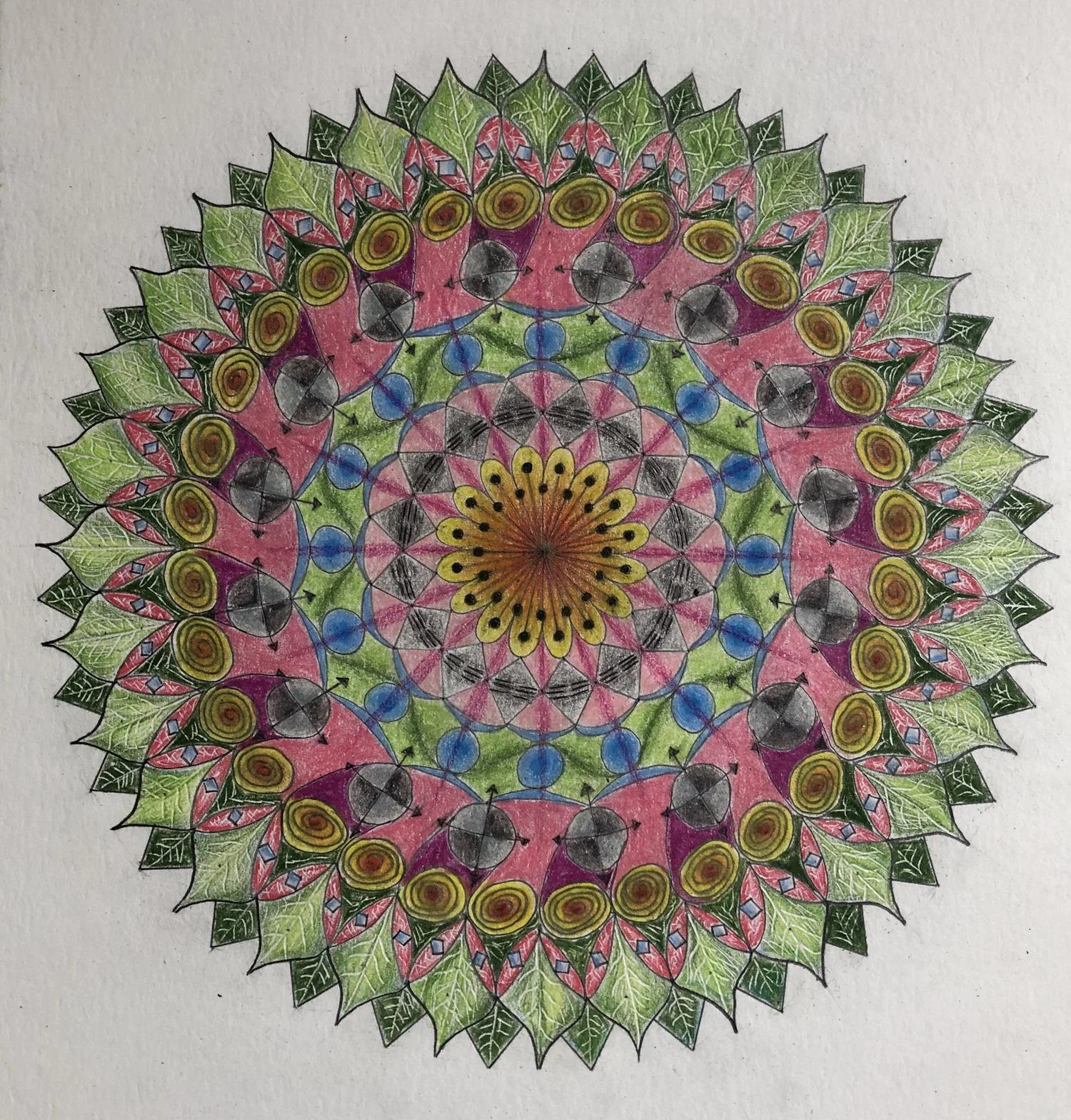Mandala
Drawing mandalas can indeed be a powerful tool for transforming consciousness. This ancient art form, rooted in spirituality and psychology, serves as a bridge between the tangible and the intangible, the external and the internal. When we engage in the process of creating a mandala, we embark on a meditative journey that can lead to profound shifts in our awareness and perception.
indful Focus: The act of drawing intricate patterns and symbols requires concentration, which naturally shifts our focus away from everyday distractions. This focused state is akin to meditation, where the mind becomes quiet, allowing for a deeper connection with our inner self.
Symbolic Representation: Mandalas are rich in symbolism, with each shape, pattern, and color holding specific meanings. As we choose these elements intuitively, we tap into our subconscious, bringing to light hidden aspects of our psyche and facilitating self-discovery and healing.
Centering: At its core, a mandala is centered around a focal point, which symbolizes unity and wholeness.
The Journey of Self-Exploration
Mandala drawing invites us on a journey of self-exploration and introspection. Each stroke and color choice reflects an inner reality, often bringing to the surface emotions and thoughts that were previously unacknowledged. This process can illuminate aspects of our inner world, offering clarity and insight into our desires, fears, and core beliefs.
The Cycle of Creation and Reflection
The cyclical nature of creating a mandala—beginning from a central point and expanding outward—mirrors the cycles of nature and life. This symbolic journey can remind us of the ever-changing nature of existence and our capacity to grow and transform. The act of regularly creating mandalas can become a ritual of self-renewal and personal evolution.
The Healing Power of Symmetry and Order
The inherent symmetry and order within mandalas bring a sense of balance and harmony, not just to the artwork but to the mind of the creator. This structured approach to creativity can be particularly soothing for individuals seeking calmness and stability in their lives. The orderly process of mandala creation can counteract feelings of chaos and disarray, promoting mental and emotional well-being.
Connecting to a Larger Whole
Drawing mandalas can also foster a sense of connectedness—to oneself, to others, and to the universe at large. The mandala's circular form, with no beginning or end, symbolizes the interconnectedness of all things. In creating mandalas, individuals often report feelings of being part of something larger than themselves, a realization that can lead to a more compassionate and holistic outlook on life.
